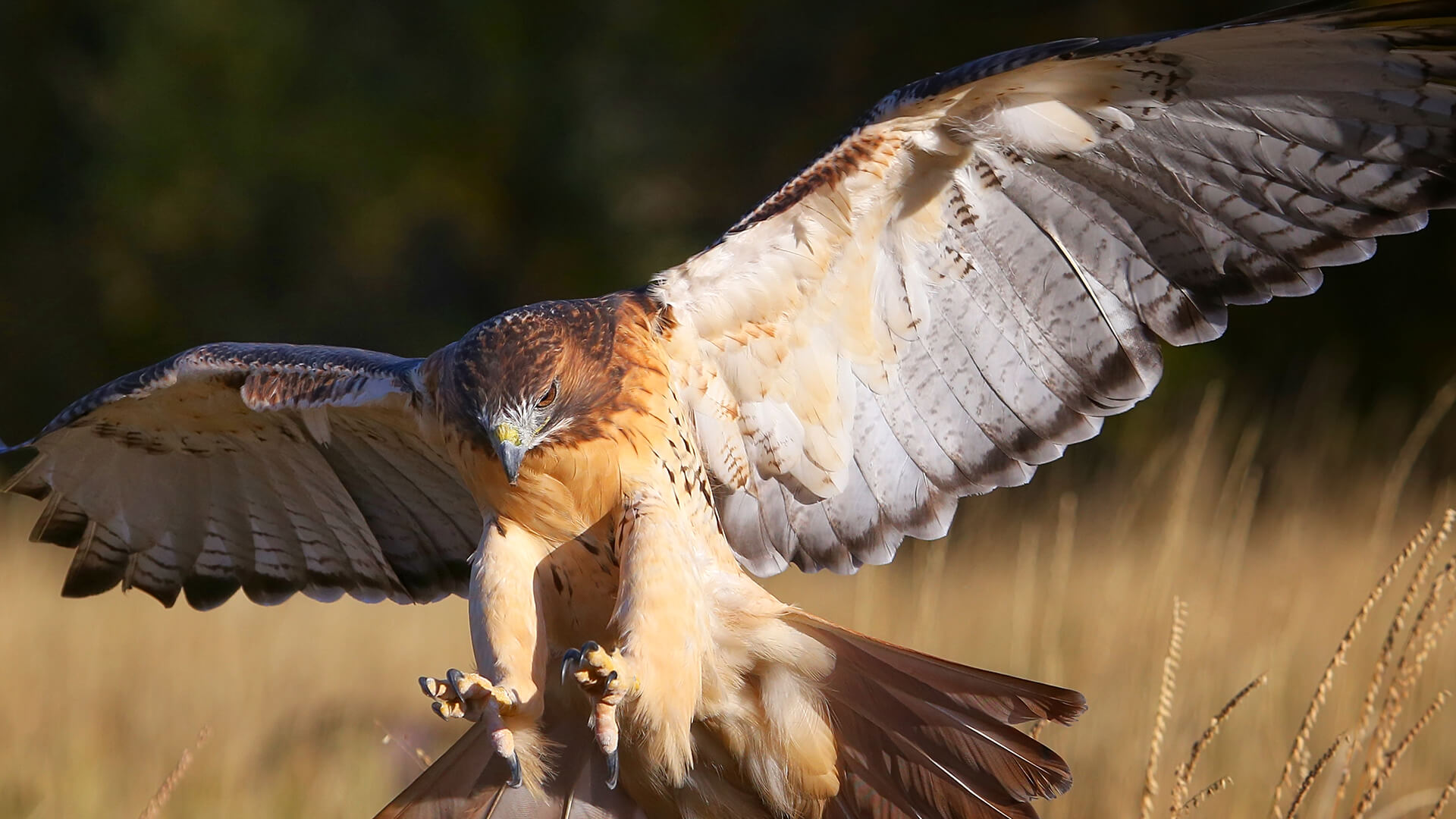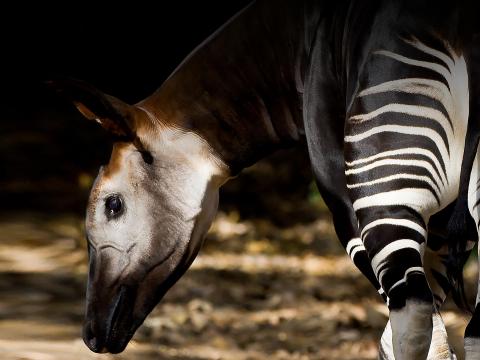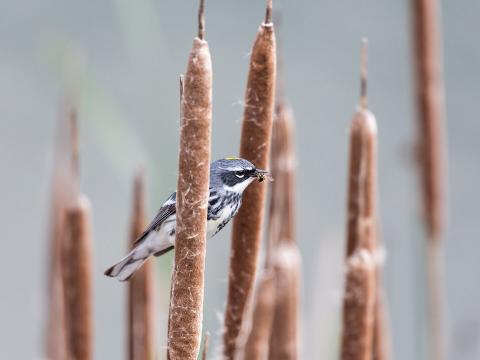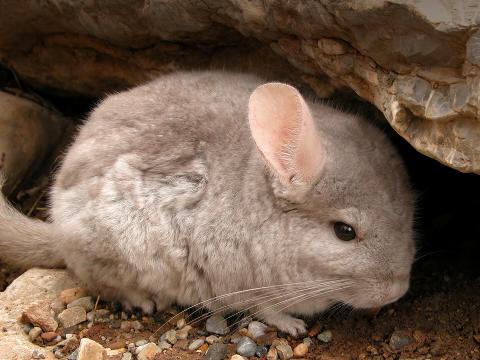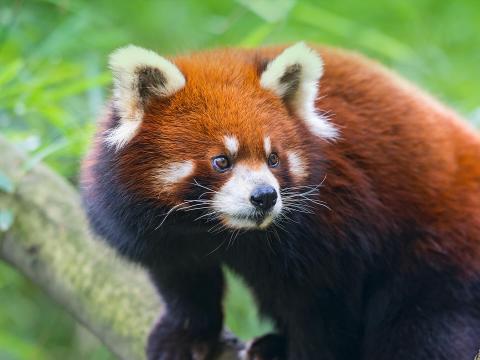Red-tailed Hawk
- CLASS: Aves (Birds)
- ORDER: Falconiformes
- FAMILY: Accipitridae
- GENUS: Buteo
- SPECIES: jamaicensis
ABOUT
Red-tailed hawks are common in San Diego County and throughout North America, whether perched on a pole, soaring overhead, or just a distant, high-pitched "kkeeer..." heard from beyond the trees. These raptors, or birds of prey, have keen eyesight, binocular vision, powerful talons for grabbing prey, and a sharp beak. They are one of the largest North American hawks and are commonly seen flying over rural areas from coast to coast. The first red-tailed hawks were identified in Jamaica, West Indies. This is how the bird gets its species name, jamaicensis. Other names for the red-tailed hawk are chicken-hawk and Harlan’s hawk.
Red-tailed hawks, like all raptors, have excellent vision. They can see colors, like most humans can, as well as those in the ultraviolet range. This means that the hawks can perceive colors that humans cannot see. Red-tailed hawks are diurnal hunters but see black and white well enough to also hunt at dusk, the time when nocturnal wildlife, especially rodents, begin to awaken and move around. These predators have a nictitating membrane; the clear inner lid cleans the eye and protects it while the hawk is wrestling with its prey.
While most birds have no sense of smell, some scientists believe that hawks may have some olfactory ability.
Adult red-tailed hawks have few predators, but great horned owls and crows prey on red-tailed hawk eggs and nestlings. Owls compete with the red-tailed hawks for nest sites; both birds are known to kill the young and destroy the eggs of the other in an attempt at taking a nest site.
HABITAT AND DIET
Wide variations in color and pattern can be found in different regions of North and Central America, but all adult red-tailed hawks have the copper-colored tail that gives them their common name. From nearly white to black, these raptors range from Alaska to Panama and from California to the West Indies. Red-tails living in San Diego County have a cocoa-colored back and buff underside with brown and black stripes.
Although they avoid the tundra and thick forest, red-tailed hawks are more adaptable than any other hawk in the Buteo genus. They inhabit a wide range of habitats, including scrub, desert, plains, grasslands, agricultural fields, pastures, parks, woodlands, and tropical rainforests. They typically choose open areas with scattered, elevated places to perch.
Red-tailed hawks tend to keep the same territory their whole life; it can be as large as 9.6 square miles (25 square kilometers). The birds defend their area with aerial displays of steep dives and climbs, the mated pair gliding together.
Those birds that live in Canada and Alaska migrate as far south as Panama to winter. They return to their home range as the weather warms up again.
About 95 percent of the red-tailed hawk’s diet consists of rodents, especially ground squirrels and mice. They also dine on other birds, reptiles, and even insects and fish at the water's edge.
Despite its strength and soaring ability, red-tails perch in wait for prey rather than soaring overhead They most often fly powerfully from a perch and then glide and snatch their meal from the ground. To stay alive, the hawk has to find the prey, catch it, and defend it from other raptors—golden eagles, bald eagles, and ferruginous hawks—long enough to eat it. Half of all red-tails do not make it through their first year of life.
FAMILY LIFE
Like other birds of prey, red-tails are vocal during the breeding season but are usually silent the rest of the year. Adults have a screeching, raspy voice used during courtship; chicks make higher-pitched, shrill calls to help the parents locate them.
Body language is an important communications tool, too. An aggressive red-tailed hawk holds its body and head upright, and its feathers stand up. A submissive hawk holds its head lower to the ground and flattens its feathers.
Red-tails pair up for life, and their aerial courtship is much like their territorial displays, a daring air show of flight bravado as the birds lock talons and spiral downward. The more migratory red-tailed hawks of the north have dramatic displays, while the more sedentary birds of the south don’t seem to work as hard to impress their mates. Although red-tailed hawks mate for life, it doesn’t mean a surviving partner won’t go on to mate again, even returning the next season to the breeding territory it knows best.
Both red-tailed hawk parents build a nest, usually in a tall tree. Where trees aren’t available, the pair builds a nest on a cliff ledge, a tall cactus, or even high in human-constructed structures such as power poles and buildings. The nest can be up to three feet (one meter) across and is made of twigs and branches and lined with bark. The pair deposits fresh bark, twigs, and pine needles into the nest throughout the breeding season to keep the nest clean. The same pair may use the nest year after year.
The female lays one to five grayish-white, speckled eggs at two-day intervals. Both parents incubate the eggs, but when it’s the female’s turn, the male provides her meals, bringing home the groceries for the hatchlings, as well.
Once the chicks hatch, it's a busy time for the red-tailed parents. Chicks are altricial but grow and fledge quickly: young hawks begin to fledge in 42 to 48 days but remain with the parents for another 30 to 70 days, practicing their flying and hunting skills. At that stage, chicks begin to chase parents for food, and the adults drop food for the young to catch. With a full stomach, the young play-chase things that look like prey.
As the chicks develop, the parents begin to drop live prey for the chicks to chase and catch. The more skilled the young become, the less the parents do this, forcing the chicks to hunt on their own.
Juvenile red-tailed hawks, no matter where they live, do not have red tails. In fact, the youngsters are a much lighter color than their parents, but their feathers change color gradually over several molts. The juveniles' hunting style also changes as they mature. As young hawks, they tend to hover high above the ground and grab at mice, large insects, reptiles, and whatever they can snag, whereas adults soar and may swoop down to grab birds or even bats in flight.
CONSERVATION
While common and even numerous in North America, red-tailed hawks, like all wildlife, are vulnerable to hunters, loss of habitat, environmental toxins, and—especially for young hawks—cars. Yet red-tailed hawks are beneficial for rodent and grasshopper control and are protected under the US. Migratory Bird Act.
The preservation of native habitats, whether plains or meadows, vast forests or city parks, can provide hunting and nesting sites for hawks and other wildlife.
By supporting San Diego Zoo Wildlife Alliance, you are our ally in saving and protecting wildlife worldwide.

